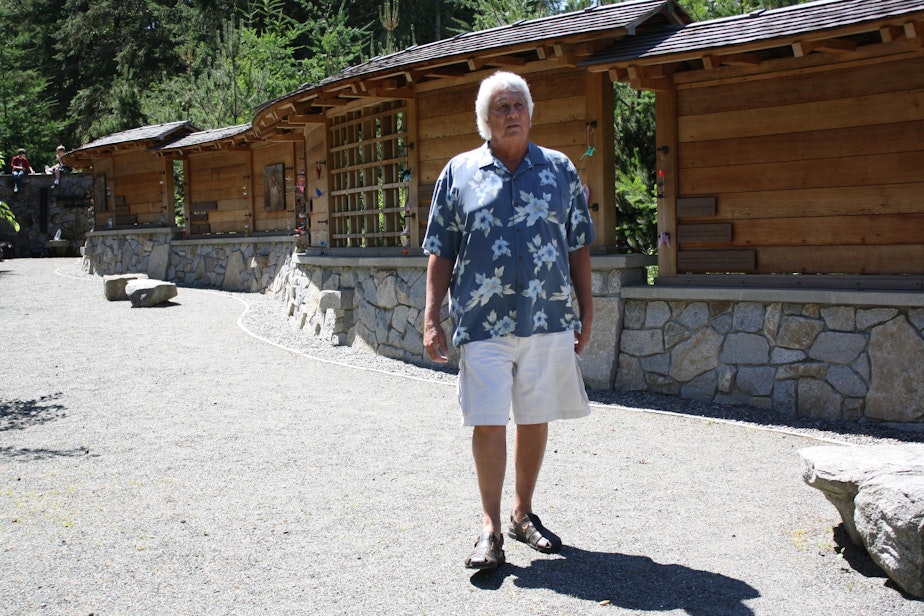Memories Of Exclusion Inspire Seattle Architect's Work

Seattle architect Johnpaul Jones will receive the National Humanities Medal from President Barack Obama on Monday. The White House says he will be the second Native American to receive the medal.
Jones gained national visibility for his work on the Smithsonian’s Museum of the American Indian in Washington, D.C.
That’s a long way from where he started. As a kid, he was an outsider. His Choctaw ancestors were forced to resettle in Oklahoma, where they weren't welcome. Seattle Architect Johnpaul Jones points to the place where Japanese Americans boarded a ferry on Bainbridge Island bound for internment camps in Idaho and California.
That fact was made clear to Jones’ dad.
“We went into town to get groceries, and then we visited some friends and I was playing outside, running around outside with my sisters," Jones recalled. "The police showed up and said to my dad he had to take his Indian wife and kids and leave. You could come into town and shop, but you couldn’t stay there."
Sponsored
Jones has used those memories of exclusion to inform his work. He designed a memorial for a local group that had experienced another kind of exclusion: Japanese Americans who were deported from Bainbridge Island and forced to move to internment camps during World War II. Johnpaul Jones at the Bainbridge Island Japanese American Exclusion Memorial
Jones began the memorial with a curving wall representing the lives of Japanese Americans before the war. Jones explains the symbolism of the wall: “They were progressing in their lives. They were moving out of being farmers into owning grocery stores, becoming professionals. And then one day, Bam! Pearl Harbor happened." At this point, the memorial’s curving walls are interrupted by stones and plants taken from one of the internment camps in Idaho. Frank Kitamoto is among those remembered on the memorial wall. He was deported at age 2, but returned to Bainbridge to become a dentist. Among his patients were Johnpaul Jones' kids. Jones says the dentist never talked about his internment.
The White House praises Johnpaul Jones for honoring the natural world and indigenous traditions in architecture. It’s an affirmation of his values. But right now, he has a more practical concern. “I got a tux 20 years ago," Jones said, laughing. "And the tux doesn’t fit anymore, and there’s not enough material to let it out, so I had to rent a tux.”
He'll be wearing that rented tux at the White House today.
Johnpaul Jones is a partner at Seattle firm Jones & Jones Architecture and Landscape Architecture. He lives on Bainbridge Island.
Sponsored
Among the 21 people receiving medals on Monday are Linda Ronstadt and NPR’s Diane Rehm.

